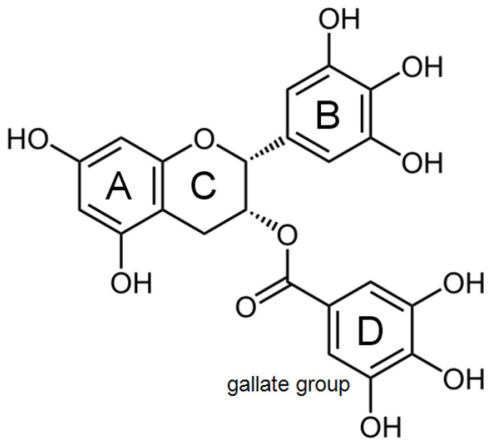Figure 1.
Chemical structure of EGCG. Some currently documented structure-function relationships are depicted in this figure. The pyrogallol-type structure on the B-ring induces apoptosis and possesses strong antioxidative activity undergoing autooxidation to form reactive oxygen species [10,11]. The galloyl moiety (D-ring, gallate group) is the critical structure in the inhibition of fatty-acid synthase leading to cytotoxicity in human cancer cells [12]. Both components B and D contribute to the exertion of biological activities related to the cell-surface 67 kDa laminin receptor [13,14]. EGCG molecular docking fractions for amyloid remodeling activity are still not known.

